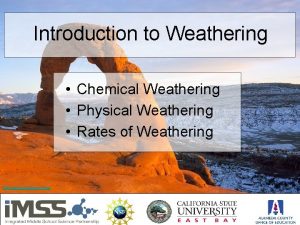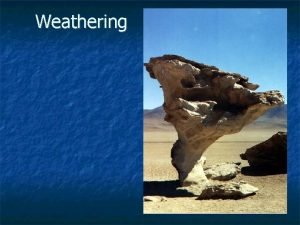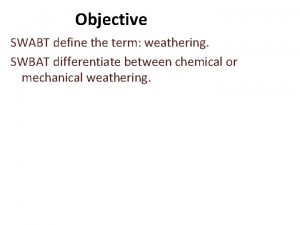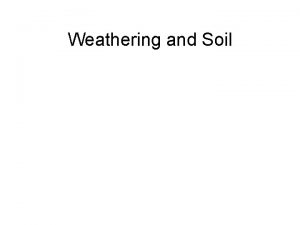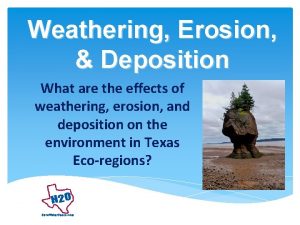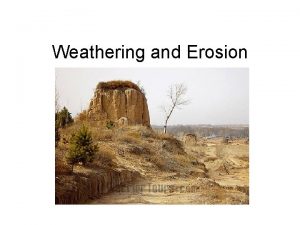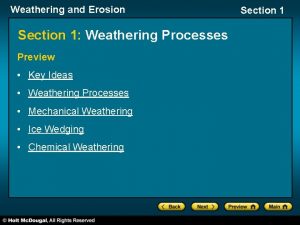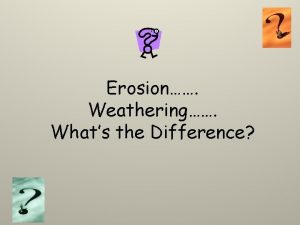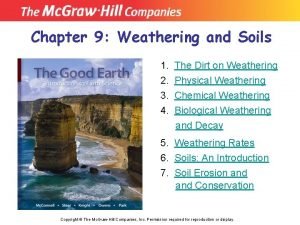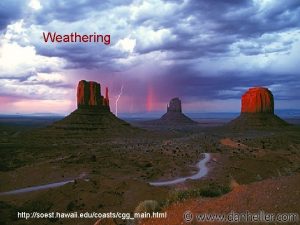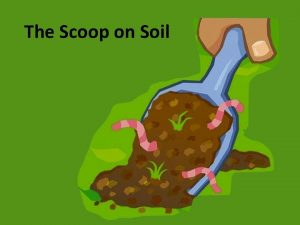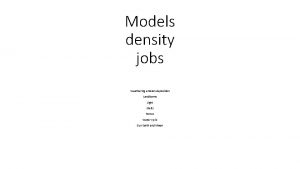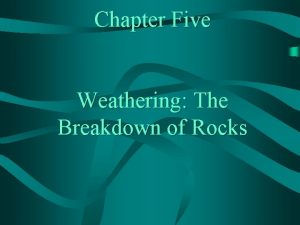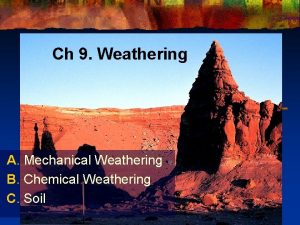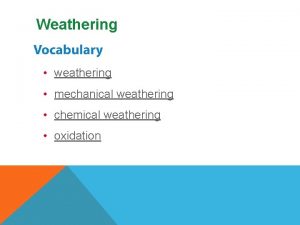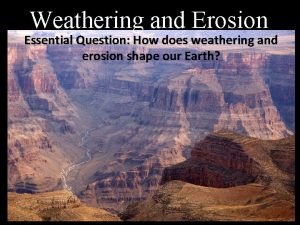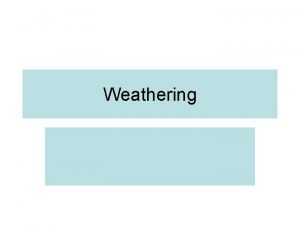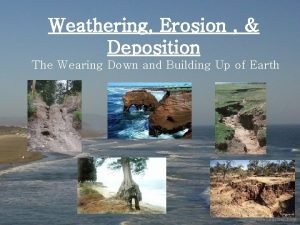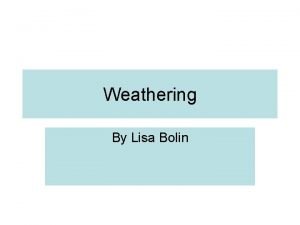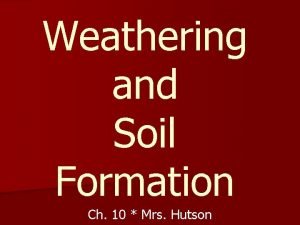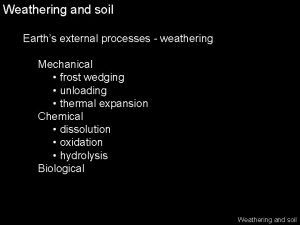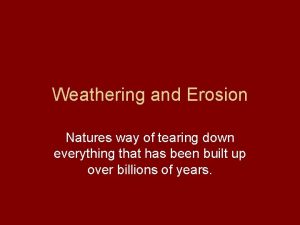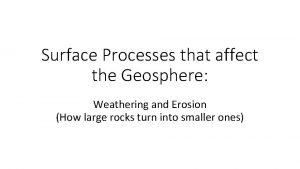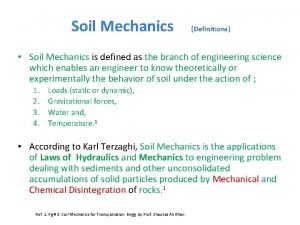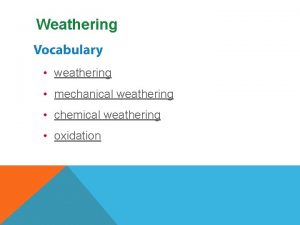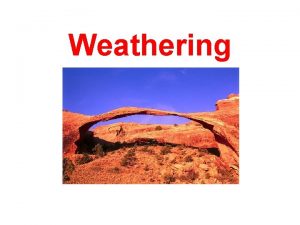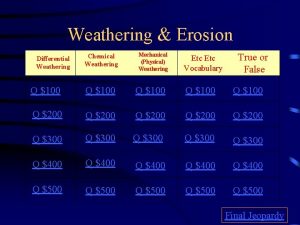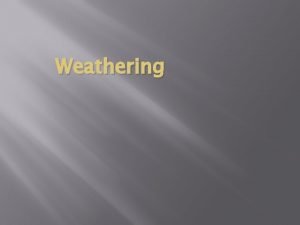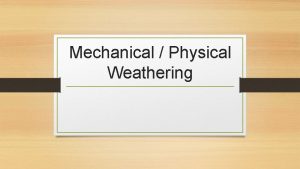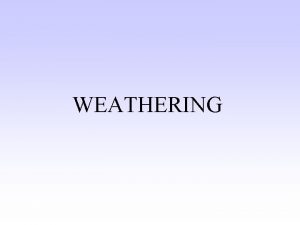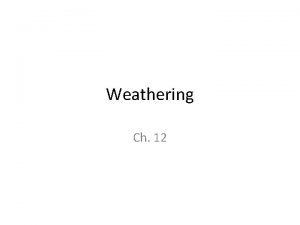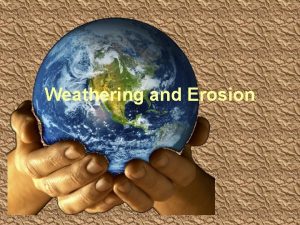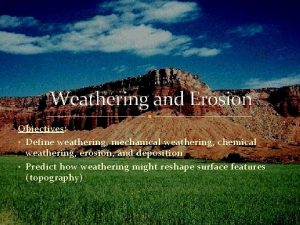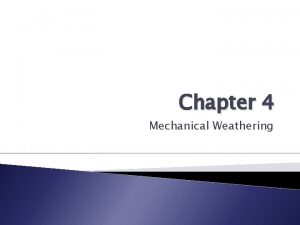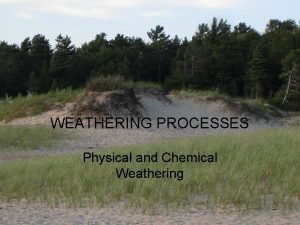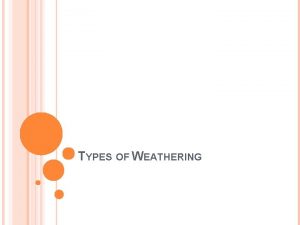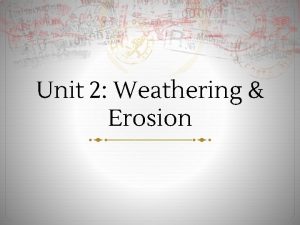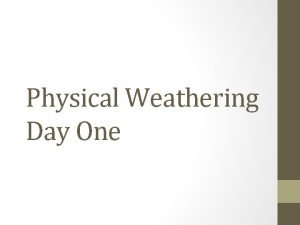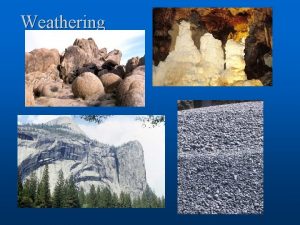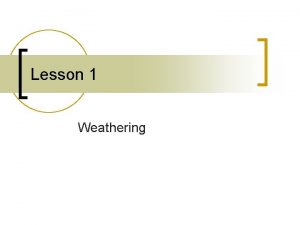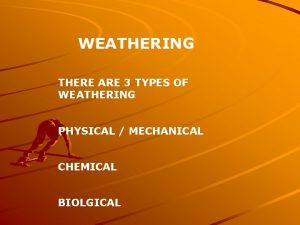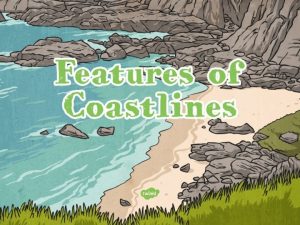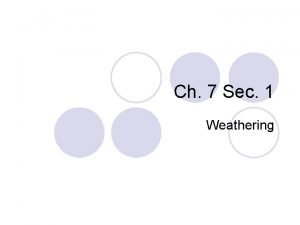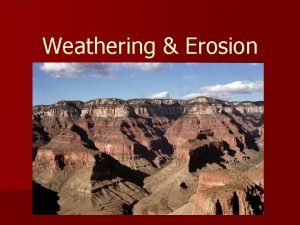Weathering Types of Weathering n n Mechanical physical



























- Slides: 27

Weathering

Types of Weathering n n Mechanical (physical) weathering Chemical weathering

Mechanical Weathering 6 causes: n Frost Wedging (Temperature) n Abrasion n Exfoliation n Trees n Wind n Pressure


frost wedging can cause a landslide

frost wedging causes damage to roads.

Where does Frost Wedging occur? n n Frost wedging can only occur in a region that has temperatures that go above and below 32 degrees F. Frost wedging not likely in Florida

Exfoliation at Stone Mountain in Georgia

Exfoliation in the Sierra Nevada

Exfoliation in Yosemite National Park

Abrasion n n Breaking and grinding away of solid rock by collisions with moving particles. Abrasion takes place due to fast moving streams, waves and wind.

Abrasion n results are smooth, round rocks.

Trees n Tree roots can break up rocks.

Wind causes interesting shapes.

Pressure Bedrock at great depths is under pressure from the overlying rock. When the overlying rock layers are removed, the bedrock can expand. 15

Chemical Weathering

Chemical Weathering n 4 Causes: n n Water Oxygen Carbon dioxide Acid precipitation 17

Water / Hydrolysis n Hydrolysis is the process where water dissolves minerals.

Oxygen / Oxidation n n 21% of the atmosphere is Oxygen. Which readily combines with Iron to create new minerals. 19

Carbon dioxide n n n Is released into the atmosphere by living organisms. When it combines with water it forms Carbonic acid. H 2 O + CO 2= H 2 CO 3

Sinkholes form due to Carbonic acid…

…and so do Caves. 22

Acid Precipitation n n Caused mainly by the oxidation of Sulfur dioxide and Nitrogen oxides. which are released due to human activities. Sulfur dioxide forms from the burning of fossil fuels. Nitrogen oxides are emitted from motor vehicle exhausts.

n n These gases combine with Oxygen and Water in the atmosphere to form Sulfuric acid and Nitric acid. Which damage the shine and texture of stone monuments. 24

Other formations from chemical weathering Karst topography is caused by dissolution n which leads to the formation of an underground system. n

Karst Topography

The Climate n Chemical weathering occurs most often in climates with warm temperatures and high rainfall. n Physical weathering occurs most often in climates with cool temperatures and low rainfall.
 Introduction to weathering
Introduction to weathering Physical weathering and chemical weathering venn diagram
Physical weathering and chemical weathering venn diagram Kinds of weathering
Kinds of weathering Types of weathering
Types of weathering What is weathering
What is weathering What are the three types of weathering
What are the three types of weathering Weathering erosion
Weathering erosion Mechanical and chemical weathering venn diagram
Mechanical and chemical weathering venn diagram Identify three agents of mechanical weathering
Identify three agents of mechanical weathering Whats chemical weathering
Whats chemical weathering Mechanical and chemical weathering venn diagram
Mechanical and chemical weathering venn diagram Ice weathering
Ice weathering The scoop on soil
The scoop on soil Mechanical weathering defintion
Mechanical weathering defintion Compare and contrast mechanical and chemical weathering
Compare and contrast mechanical and chemical weathering Whats the definition of chemical weathering
Whats the definition of chemical weathering Mechanical weathering
Mechanical weathering Type of weathering
Type of weathering Mechanical weathering is more rapid in warm wet climates
Mechanical weathering is more rapid in warm wet climates Venn diagram mechanical and chemical digestion
Venn diagram mechanical and chemical digestion Causes of weathering
Causes of weathering Compare and contrast mechanical and chemical weathering
Compare and contrast mechanical and chemical weathering Mechanical and chemical weathering
Mechanical and chemical weathering Venn diagram of mechanical and chemical weathering
Venn diagram of mechanical and chemical weathering Eluviation and illuviation
Eluviation and illuviation Venn diagram of mechanical and chemical weathering
Venn diagram of mechanical and chemical weathering What type of rock
What type of rock Soil mechanics
Soil mechanics
